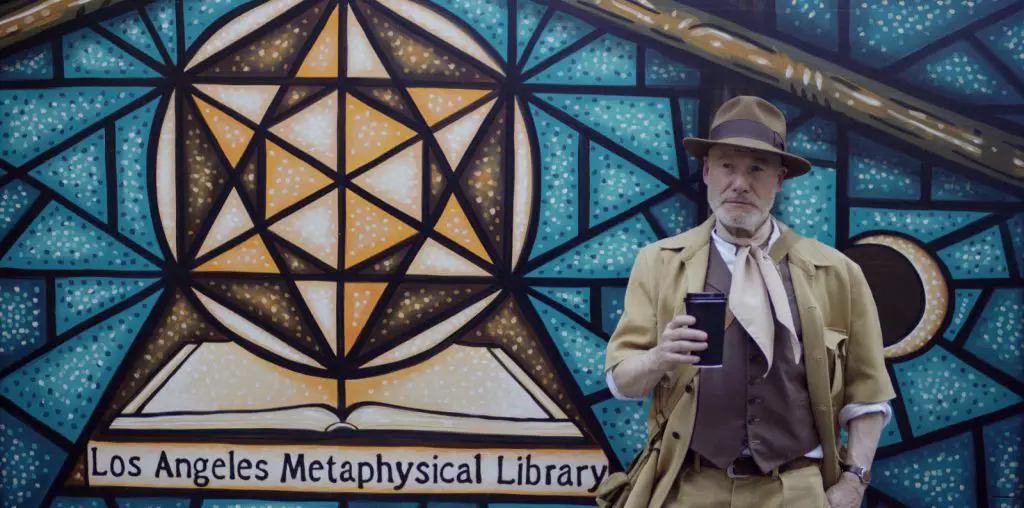
While “The Brothers Grimm” is an enjoyable film, I couldn’t help but feel while watching it that with a bigger budget came more constraints on director Terry Gilliam’s quirky tendencies. I’m sure the Weinsteins worried that allowing the director too much leeway would turn the film into one that couldn’t connect with a mass audience. It’s a shame that Gilliam couldn’t cut loose and make the movie he really wanted to make, but at the same time, it’s still an admirable effort. My biggest problem with it is a nonsensical change of heart by one of the antagonists toward the end, a plot development that seems to be there because no one could figure out how to make the third act work properly.
Like “Shakespeare in Love,” “The Brothers Grimm” takes an imaginative look at the possible inspiration behind classic tales. Unlike “Shakespeare in Love,” however, the average person has no preconceived notions about Jacob and Wilhelm Grimm, so Gilliam was free to portray them any way he liked. In this case, they’re a pair of Napoleonic era con men who use elaborate gadgets to trick people into thinking they’re dealing with supernatural creatures. The brothers can defeat those creatures, but only for a fee, of course.
After we’ve seen the Grimms pull off one such scam, a French general tasks them with saving a local village from a monster that’s kidnapped several of their little girls. He sends with them a nasty Italian torture expert named Cavaldi, who figures the Grimm brothers will double-cross him the first chance they get, so he must constantly hang the threat of a horrific death over their heads. Of course, Jacob and Wilhelm soon learn that they’re up against a real monster, and they must work together to defeat it. A terrible incident from their childhood provides constant tension between them.
While Will is the levelheaded money guy, Jacob is the storyteller prone to flights of fancy. That also provides tension between them, but unfortunately those are the only two notes in their relationship, which I wish Gilliam and screenwriter Ehren Kruger had fleshed out a bit more. Matt Damon and Heath Ledger turn in solid performances, although Lena Headey is only passable in her role as Angelika, an outcast among her fellow villagers who can lead the Grimms to the right place in the forest. Jonathan Pryce and Peter Stormare, of course, turn in wonderful performances as the French general and the Italian torturer, respectively, but one expects such from actors who know how to play over-the-top roles.
This DVD includes a commentary track from Gilliam, who, as film buffs know, loves to talk about his movies. This track is no different; it’s packed with recollections about the making of the film as well as insights into the connections between the original Grimm fairy tales and the story. Gilliam also touches on the film’s many special effects. While he understands CGI is an important tool for filmmakers these days, he tries to create in-camera effects wherever he can, and this commentary track often points out where the real ends and the digital begins.
While Gilliam is notorious for letting film studios have it on previous commentary tracks (the Criterion version of “Brazil” is a great example of that), he unfortunately holds back here and refrains from touching on any of the problems he reportedly experienced while making “The Brothers Grimm.” However, he does make a snarky reference in the deleted scenes commentary to his main characters’ “white American teeth” as his only supposed concession during the project. Read into that what you will.
This disc contains 12 deleted scenes that run 15 minutes. While almost all of them deserved their fate on the cutting room floor, one of them is a set piece that’s sure to provoke debates about whether or not Gilliam was right in deleting it. Personally, I agree with him: it’s such a showstopper that it would threaten to overshadow the film’s climax if it had been left in. As I mentioned, there’s a commentary track on these scenes. It’s not as interesting as the feature film track, but Gilliam only has a minute or so to discuss a scene before moving on to the next one.
Finally, this DVD contains a pair of featurettes: the 16-minute “Bringing the Fairytale to Life” and the eight-minute ‘The Visual Magic of the Brothers Grimm.” The first one digs a bit into the real-world inspiration for the movie while the second skims over some of the special effects and explains what was real and what was CGI. Neither is terribly ground-breaking, and their brevity precludes any real depth to the material, but they’re still worthwhile viewing.
“The Brothers Grimm” may not rank up there with Gilliam’s best work, but it’s still an enjoyable film that’s at least worth a rental.
